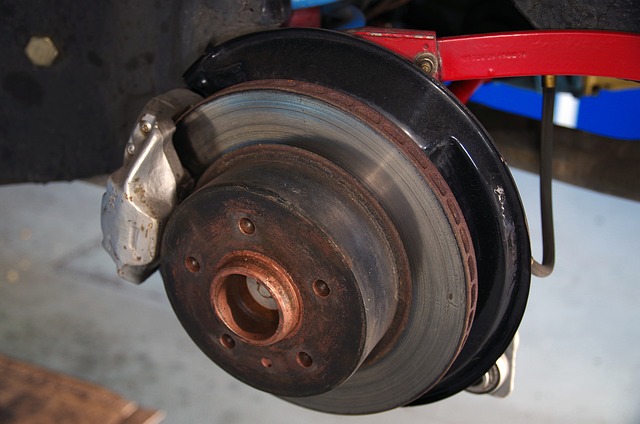Regular HVAC maintenance is key for system efficiency and longevity. Refrigerant leaks in HVAC systems can lead to reduced performance, increased energy costs, and potential damage to the system. These leaks disrupt the chemical refrigerant cycle, causing a range of issues from inefficiency to component failure. To address this, professional HVAC repair services use specialized tools like UV dye for visual tracking, infrared cameras, and electronic leak detectors to precisely locate leaks. After detection, the leak is sealed with airtight materials, and the system is recharged with the correct amount of refrigerant to restore its function. Prompt leak detection and repair are crucial to prevent extensive damage and maintain optimal efficiency, saving on energy costs and extending the system's life. HVAC repair involves meticulous processes, including visual inspections, use of electronic or UV leak detectors, and adherence to safety protocols due to the hazardous nature of refrigerants. The entire process must be conducted by certified professionals following manufacturer guidelines and environmental regulations to ensure both system integrity and compliance with standards. Regular maintenance by HVAC experts is essential for early detection of leaks and avoiding costly repairs associated with significant refrigerant loss.
When your home’s HVAC system isn’t performing as expected, a refrigerant leak could be the culprit. This article delves into the intricacies of troubleshooting and recharging refrigerant in HVAC systems, ensuring you can maintain optimal performance and energy efficiency. From recognizing signs of leaks to understanding the environmental impact of refrigerants, we guide you through each step, emphasizing safety and precision. Whether you’re a homeowner looking to tackle a DIY fix or seeking professional assistance, this comprehensive guide covers everything from leak detection and repair to recharging with eco-friendly refrigerants.
- Understanding Refrigerant Leaks in HVAC Systems
- Identifying Common Signs of Refrigerant Leaks
- Tools and Safety Gear for Detecting Refrigerant Leaks
- Step-by-Step Guide to Locating Refrigerant Leaks in HVAC Systems
Understanding Refrigerant Leaks in HVAC Systems

Identifying and addressing refrigerant leaks in HVAC systems are critical for maintaining efficient operation and ensuring the system’s longevity. A leak can significantly impair the performance of your HVAC system, leading to inadequate cooling or heating and higher energy bills. To effectively troubleshoot such issues, one must first understand the role of refrigerant within the HVAC system. Refrigerant, a chemical compound commonly known as Freon, cycles through the system absorbing and releasing heat. A leak disrupts this cycle by allowing refrigerant to escape, which can cause a cascade of problems, including poor performance and eventual component failure due to overwork.
HVAC repair professionals employ various methods to detect and fix these leaks. Ultraviolet (UV) dye can be added to the refrigerant during a recharge, making it easier to visually trace leaks. Advanced tools like infrared cameras or electronic leak detectors are also instrumental in pinpointing the exact location of leaks. Once identified, the repair process involves sealing the leak, often with a substance that creates an airtight bond, and then recharging the system with the correct amount of refrigerant. It’s imperative to perform this task accurately, as improper handling can lead to further complications and inefficiency. Regular maintenance and prompt leak detection are key to preventing costly repairs and ensuring your HVAC system operates at peak performance.
Identifying Common Signs of Refrigerant Leaks

When a refrigerant leak occurs in an HVAC system, it can significantly impact the unit’s performance and efficiency. To effectively troubleshoot and address such issues, it’s crucial to first recognize the signs of a leak. A noticeable decline in cooling or heating output is often one of the initial indicators. As the refrigerant level drops, the system may struggle to maintain the desired temperature, leading to longer running times and potentially higher energy bills. Another common sign is a hissing sound near the affected component, which can pinpoint the leak’s location. This sound is the escaping refrigerant, which, if left unchecked, will result in a complete system failure. Additionally, ice buildup on the refrigerant lines or outdoor coil, beyond what is typical for the climate, may suggest a leak as the system is low on refrigerant and unable to dissipate heat properly. HVAC repair professionals use specialized detection equipment to confirm the presence of a leak and to quantify the amount of refrigerant that has escaped. Once identified, the leak can be repaired, and the system recharged with the correct type and amount of refrigerant, restoring its full functionality and ensuring optimal performance. Regular maintenance by qualified technicians can help prevent leaks by checking connections and seals, and by verifying refrigerant levels as part of routine HVAC repair services.
Tools and Safety Gear for Detecting Refrigerant Leaks

When addressing refrigerant leaks within HVAC systems, safety and precision are paramount. A certified HVAC technician must be equipped with the necessary tools and personal protective equipment (PPE) to handle refrigerants safely and efficiently. The primary tools for detecting refrigerant leaks include electronic leak detectors, which are sensitive devices that can identify even trace amounts of refrigerant gas. These leak detectors vary from ultraviolet (UV) light leak detectors to infrared detectors, each with its own specific use case and advantages. Additionally, technicians should have a proper suite of PPE, including gloves, safety glasses, and protective clothing to shield against potential skin and eye contact with refrigerants or any chemicals used in the process.
For leak detection, the HVAC Repair professional will start by isolating the system component under inspection. The leak detector is then used to scan the entire system, tracing the path of the suspected leak. Once a leak is detected, the technician can use specialized equipment such as soapy bubble solution to visually confirm the leak’s location. After identifying and documenting the leak, the technician will proceed with repairs, ensuring that all safety protocols are followed. It is crucial that the repair work adheres to the manufacturer’s guidelines and local regulations concerning refrigerant handling. Once the repair is complete and the system is deemed leak-free, the HVAC technician can recharge the system with the correct type and amount of refrigerant as specified by the manufacturer, following all safety and environmental protocols to maintain both system integrity and compliance with environmental standards.
Step-by-Step Guide to Locating Refrigerant Leaks in HVAC Systems

When a refrigerant leak is suspected in an HVAC system, prompt and precise action is required for effective HVAC repair. The first step in locating a refrigerant leak is to visually inspect the system for any signs of moisture or ice build-up, as these can indicate a leak. Pay close attention to fittings, valves, and joints where leaks commonly occur. Utilize a leak detector, which can be either electronic or ultraviolet (UV), to pinpoint the exact location of the leak. For electronic detectors, ensure they are calibrated correctly to detect the specific type of refrigerant used in the system. When using a UV leak detector, operate it under blacklight conditions, as leaks will appear as bubbles or fog under the UV light.
Once a potential leak is identified, confirm it by applying soapy water around the suspected area. Bubbles forming at a specific point indicate an exact leak location. After identifying the leak, assess its size and nature. Small pinhole leaks can often be repaired on-site with epoxy or sealant, while larger ones may require more extensive repairs or replacement of components. It’s crucial to repair the leak before recharging the system with refrigerant to prevent further loss and ensure the HVAC system operates efficiently. Throughout this process, adhere strictly to safety protocols, as handling refrigerants can be hazardous without proper training and equipment. This meticulous step-by-step approach to locating refrigerant leaks is essential for effective HVAC repair and maintaining the integrity of the cooling system.
In wrapping up our exploration of HVAC refrigerant leaks and their resolution, it’s clear that prompt identification and repair are critical for maintaining efficient system operation. By understanding the common signs associated with such leaks, employing the appropriate tools and safety gear, and following a systematic approach to locate them, homeowners and HVAC professionals can effectively address these issues. Regular maintenance and check-ups are key to preventing the complications that arise from refrigerant loss. Remember, for any HVAC repair needs, professional expertise is often necessary to ensure system integrity and optimal performance. Ensuring your HVAC system operates with the correct amount of refrigerant not only extends its lifespan but also contributes to energy savings and comfort within your living environment.
